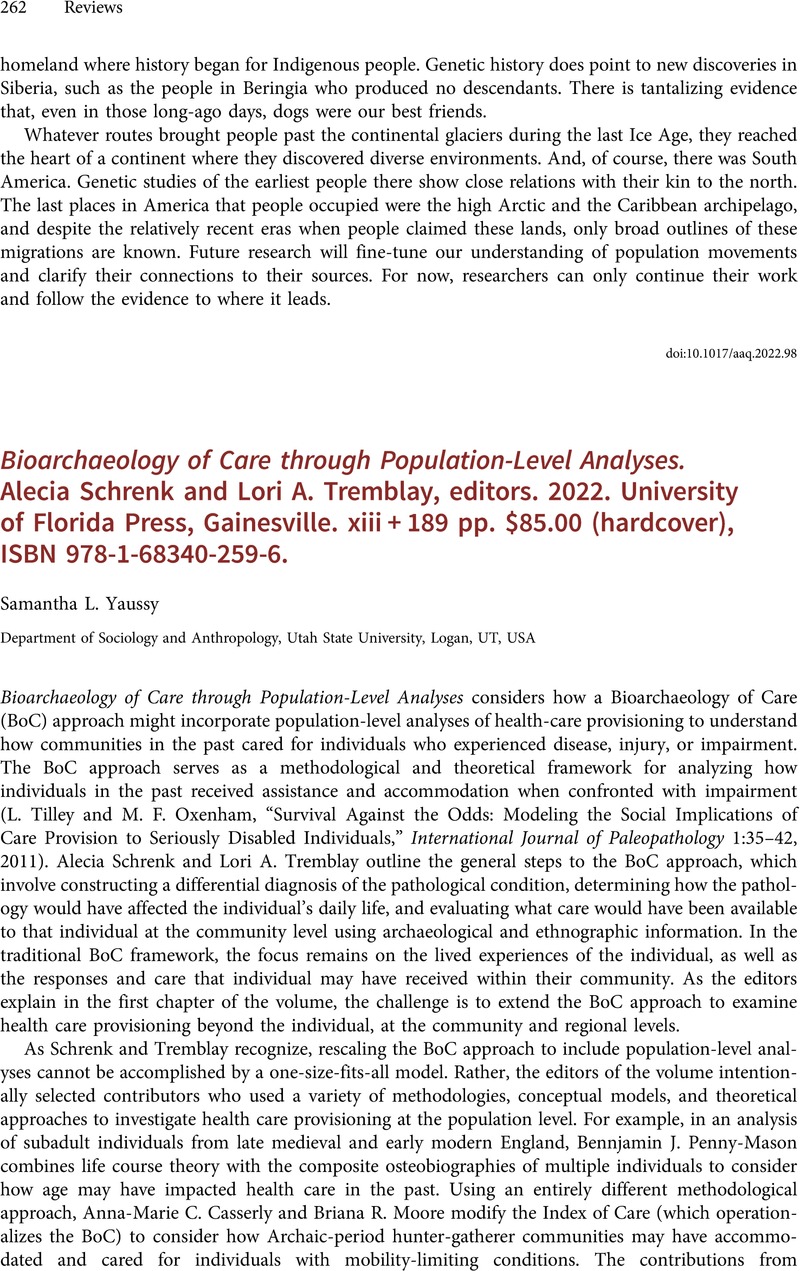No CrossRef data available.
Article contents
Bioarchaeology of Care through Population-Level Analyses. Alecia Schrenk and Lori A. Tremblay, editors. 2022. University of Florida Press, Gainesville. xiii + 189 pp. $85.00 (hardcover), ISBN 978-1-68340-259-6.
Review products
Bioarchaeology of Care through Population-Level Analyses. Alecia Schrenk and Lori A. Tremblay, editors. 2022. University of Florida Press, Gainesville. xiii + 189 pp. $85.00 (hardcover), ISBN 978-1-68340-259-6.
Published online by Cambridge University Press: 09 December 2022
Abstract
An abstract is not available for this content so a preview has been provided. Please use the Get access link above for information on how to access this content.

- Type
- Review
- Information
- Copyright
- Copyright © The Author(s), 2022. Published by Cambridge University Press on behalf of the Society for American Archaeology


